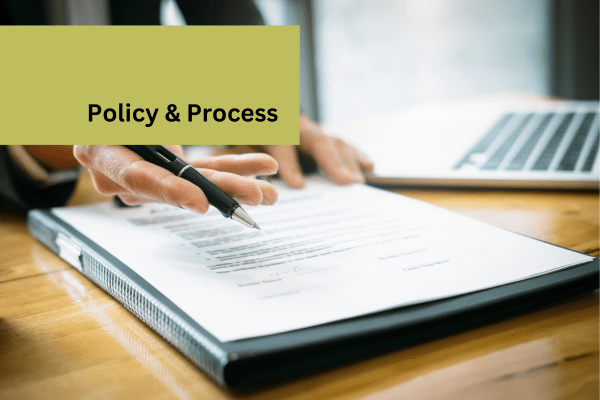Successful Public Sector Tenders and Grants

The Importance of a Modern Slavery Policy
Modern slavery is a heinous crime, which can be undetected for decades. Victims suffer slavery, servitude, forced and compulsory labour, and human trafficking. It can have a traumatic effect on people and leave them mentally scarred and unable to cope alone in the real world – a fear which holds them from escaping.
If you are tendering for a public sector tender, it is essential your company has a Modern Slavery policy, but this is not a “tick box” exercise. While there are some policies created to deal with a circumstance reactively, as & when something goes awry, that is not the case with modern slavery. This is something that you need to be on the lookout for 24/7, either with sub-contractors you are using or may come across in your work.
This is an area that Government departments are determined to crack down on, and there is lots of information and links they have researched and put online on their websites. So, it is essential that you take this fully onboard, if you are planning to tender for public sector contracts. But this is not just an exercise to land contracts, a well-written policy actively used can help catch the perpetrators of these crimes, provide vital mental health care for the victims, and we mustn’t forget protecting the reputation of your company.
Modern slavery is a popular crime in the tabloid press and can potentially involve people working in this country without the correct paperwork. Both potentially could cause reputational damage to your company and put public sector work at risk, leading also to a financial impact. Now you can see the benefits of a Modern Slavery Policy.
Training staff what to look for.
While certain areas, such as the construction industry or emergency health workers, where you may look to provide relief cover, may have industry specific training, it does no harm to include Modern Slavery as part of a staff-wide awareness programme. The more people within the company who are aware of potential signs to look out for, the less chance a potential situation will slip through the net.
To back up any training, HM Government has produced a downloadable pamphlet specifically aimed at public sector staff who may encounter potential situations on rare occasions. But, that rare occasion could be that opportunity to catch someone and rescue one or even more people from this difficult situation. The more that are, the safer and fairer the world will be: – the pamphlet can be downloaded from Modern slavery awareness booklet.
If you are looking to provide relief staff in a medical area for the NHS, the Government is keen to ensure that all staff have the necessary information on how to spot the signs of modern slavery on casualties and/or bystanders while undertaking their work. These are the links they refer to on their website:-
NHS England have provided information on their website that focuses on the organisations work around modern slavery. This sets out a range of ongoing activity including training, awareness raising and joint working with other organisations.
E-learning for Healthcare has produced a 30-minute e-learning package that is free to access for all healthcare professionals.
The Royal College of Nursing has produced a pocket guide to help nurses and midwives identify victims of slavery and help victims find support.
The Independent Anti-Slavery Commissioner (IASC) has produced a video for all health staff, and another for emergency services staff, on spotting the signs of modern slavery.
One of those areas where accidents may happen is the building industry, where unskilled labourers may have been illegally brought into this country and used as forced labour. These links are the ones recommended by the Government for background information within the Construction Industry.
This Gangmasters and Labour Abuse Authority document includes information on modern slavery, trafficking and forced labour. You can also find information on what signs to look for, such as behaviours, working conditions and victim appearance. It also gives guidance on practical ‘do’s & don’ts’ when working with potential victims.
Report from the Chartered Institute of Building on Modern Slavery within the building industry – Construction and the Modern Slavery Act: tackling exploitation in the UK.
Types of Modern Slavery
Our view of slavery may be based on images from history and Hollywood movies. But that kind of image will be way different from those reflecting modern slavery. Especially as it is definitely not the norm in the modern age, rather governments, especially the UK Government, and indeed the vast majority of people across the UK, totally abhor the practice. Seventeen types have been identified as examples of modern slavery. A detailed report on this can be found at ‘A typology of modern slavery offences in the UK’
When looking at possible occurrences of modern slavery, it is important to consider that whilst the person you see may be a victim of modern slavery, it is possible that the perpetrators may have other people in a similar position you are not aware of. Perhaps back at their base or indeed at other job site locations in the area. Plus, however, you may feel about the process. The people doing this may resort to violence if you even approach the person you suspect as a victim.
There is a reporting process if you think you or one of your employees flags up their suspicions to you. Modern Slavery Helpline: 08000 121 700 or online at: www.modernslaveryhelpline.org provides information and advice about modern slavery, a 24-hour telephone reporting line, online reporting through the website, and can provide training to public sector organisations on modern slavery. What you must always remember is not “What if I’m wrong”, but “What if I’m right”?
What your potential clients are saying.
So, what could the effect be whether you do or don’t have a Modern Slavery Statement and policy? There are areas where it is preferable rather than mandatory. You could take the risk and not bother – but that decision could be the one factor that sways the decision in favour of someone else. These are not intended as scaremongering tactics. As part of the research for the blog, we also checked what the websites of some public sector bodies who could potentially be your clients if you landed a tender to see what they say.
One of them identified the following areas as areas where there was an identifiable risk of modern slavery – Audio Visual & IT Equipment, Catering, Cleaning, Construction, Recruitment agencies, Security, Travel, and Waste management. They also confirmed that as part of due diligence, it was their intention to use enhanced questions as part of their supplier management process.
Now here is the interesting point that should be considered when you decide whether it is necessary to do this. Less than 10% of their suppliers (453 out of 6000+) are required to provide a modern slavery statement. But an astonishing 99.998% compliance with section 54 of the Modern Slavery Act 2015 is what they have from the companies within their supply chain and procurement process.
The Statistics
This is a crime where we do not know the true extent. Many victims are people who have been trafficked here. They are likely here illegally, and part of that “slavery” is paying back their traffickers for the journey. People from charities who work in the area believe that the Government statistics of those identified probably only account for 10-15% of the true figure, and there are more ways to get these people into the country than the boats that hit the headlines.
Some of the earliest recorded figures are from 2014, which shows around 2,400 referrals to the Home Office, which has increased alarmingly over the last decade, apart from the period obviously during the COVID-19 Crisis. The latest figures relate to 2022 – it has now leaped up to nearly 17,000, and showed an increase of around a third from the 2021 figure. You must admit this is an alarming increase, and it is great to see the work the Government is doing.
Modern Slavery Statements
As we have stressed in this article, both the UK Government and most people in the UK are totally against modern slavery and those who perpetrate it. That being the case, it is perhaps not surprising that many employers are keen to add voluntary statements regarding their policy and stand on Modern Slavery.
The Government is keen that the public, and for that matter those looking for suppliers and sub-contractors, can see which companies do have Modern Slavery statements and policies. Once you have created yours, and as you can read below, we are willing to assist you with this. It is possible to go on a National Register. If you want to check this out, please follow this link Modern slavery statement registry – GOV.UK
We hope you have found this information useful and can draft your Modern Slavery statement and policy. If you are however still unsure, we can draft them for you, from £125 per hour, or you can purchase a template for £59. We at Tender Response are keen to do everything we can to assist you and your company land Public Sector Tenders. Please do not hesitate to contact us with any queries about the process.
For more information, email admin@tenderresponse.co.uk
